1. Heimbach JK, Kulik LM, Finn RS, Sirlin CB, Abecassis MM, Roberts LR, et al. AASLD guidelines for the treatment of hepatocellular carcinoma. Hepatology. 2018; 67:358–380. PMID:
28130846.

2. Takamoto T, Hashimoto T, Inoue K, Nagashima D, Maruyama Y, Mitsuka Y, et al. Applicability of enhanced recovery program for advanced liver surgery. World J Surg. 2014; 38:2676–2682. PMID:
24838485.

3. Page AJ, Kooby DA. Perioperat ive management of hepatic resection. J Gastrointest Oncol. 2012; 3:19–27. PMID:
22811866.
4. Sasaki K, Shindoh J, Margonis GA, Nishioka Y, Andreatos N, Sekine A, et al. Effect of background liver cirrhosis on outcomes of hepatectomy for hepatocellular carcinoma. JAMA Surg. 2017; 152:e165059. PMID:
28052155.

5. Kamiyama T, Nakanishi K, Yokoo H, Kamachi H, Tahara M, Yamashita K, et al. Perioperative management of hepatic resection toward zero mortality and morbidity: analysis of 793 consecutive cases in a single institution. J Am Coll Surg. 2010; 211:443–449. PMID:
20822741.

6. Wu CC, Cheng SB, Ho WM, Chen JT, Liu TJ, P'eng FK. Liver resection for hepatocellular carcinoma in patients with cirrhosis. Br J Surg. 2005; 92:348–355. PMID:
15672423.

7. Sahara K, Paredes AZ, Tsilimigras DI, Hyer JM, Merath K, Wu L, et al. Impact of liver cirrhosis on perioperative outcomes among elderly patients undergoing hepatectomy: the effect of minimally invasive surgery. J Gastrointest Surg. 2019; 23:2346–2353. PMID:
30719676.

8. Yoon YI, Kim KH, Kang SH, Kim WJ, Shin MH, Lee SK, et al. Pure laparoscopic versus open right hepatectomy for hepatocellular carcinoma in patients with cirrhosis: a propensity score matched analysis. Ann Surg. 2017; 265:856–863. PMID:
27849661.
9. Wilmore DW, Kehlet H. Management of patients in fast track surgery. BMJ. 2001; 322:473–476. PMID:
11222424.
10. Wilmore DW. From Cuthbertson to fast-track surgery: 70 years of progress in reducing stress in surgical patients. Ann Surg. 2002; 236:643–648. PMID:
12409671.

11. van Zelm R, Janssen I, Vanhaecht K, de Buck van Overstraeten A, Panella M, Sermeus W, et al. Development of a model care pathway for adults undergoing colorectal cancer surgery: evidence-based key interventions and indicators. J Eval Clin Pract. 2018; 24:232–239. PMID:
28145019.

12. Rossi G, Vaccarezza H, Vaccaro CA, Mentz RE, Im V, Alvarez A, et al. Two-day hospital stay after laparoscopic colorectal surgery under an enhanced recovery after surgery (ERAS) pathway. World J Surg. 2013; 37:2483–2489. PMID:
23881088.

13. Ni TG, Yang HT, Zhang H, Meng HP, Li B. Enhanced recovery after surgery programs in patients undergoing hepatectomy: a meta-analysis. World J Gastroenterol. 2015; 21:9209–9216. PMID:
26290648.

14. Nishikawa H, Yoh K, Enomoto H, Ishii N, Iwata Y, Takata R, et al. The relationship between controlling nutritional (CONUT) score and clinical markers among adults with hepatitis C virus related liver cirrhosis. Nutrients. 2018; 10:E1185. PMID:
30158477.

15. Harimoto N, Yoshizumi T, Inokuchi S, Itoh S, Adachi E, Ikeda Y, et al. Prognostic significance of preoperative controlling nutritional status (CONUT) score in patients undergoing hepatic resection for hepatocellular carcinoma: a multi-institutional study. Ann Surg Oncol. 2018; 25:3316–3323. PMID:
30051372.

16. Mannan R, Misra V, Misra SP, Singh PA, Dwivedi M. A comparative evaluation of scoring systems for assessing necro-inflammatory activity and fibrosis in liver biopsies of patients with chronic viral hepatitis. J Clin Diagn Res. 2014; 8:FC08-12.

17. Clavien PA, Barkun J, de Oliveira ML, Vauthey JN, Dindo D, Schulick RD, et al. The Clavien-Dindo classification of surgical complications: five-year experience. Ann Surg. 2009; 250:187–196. PMID:
19638912.
18. de Araujo Lamino D, Turrini RN, Kolcaba K. Cancer patients caregivers comfort. Rev Esc Enferm USP. 2014; 48:278–284. PMID:
24918887.
19. Fuster J, Llovet JM, Garcia-Valdecasas JC, Grande L, Fondevila C, Vilana R, et al. Abdominal drainage after liver resection for hepatocellular carcinoma in cirrhotic patients: a randomized controlled study. Hepatogastroenterology. 2004; 51:536–540. PMID:
15086197.
20. Day RW, Cleeland CS, Wang XS, Fielder S, Calhoun J, Conrad C, et al. Patient-reported outcomes accurately measure the value of an enhanced recovery program in liver surgery. J Am Coll Surg. 2015; 221:10231030.e1–1030.e2. PMID:
26611799.

21. Kim SJ, Jung HK, Lee DS, Yun SS, Kim HJ. The comparison of oncologic and clinical outcomes of laparoscopic liver resection for hepatocellular carcinoma. Ann Surg Treat Res. 2014; 86:61–67. PMID:
24761410.

22. Wang L, Feng L, Rong W, Liu M, Wu F, Yu W, et al. Regional ischemic preconditioning has clinical value in cirrhotic HCC through MAPK pathways. J Gastrointest Surg. 2019; 23:1767–1777. PMID:
30542823.

23. Wu JX, Wang LM, Liu LG, Zhong YX, Rong WQ, Wu F, et al. Application of selective and timely regional hepatic vascular occlusion for resection of large centrally located liver tumors: report of 133 cases. Zhonghua Zhong Liu Za Zhi. 2012; 34:850–854. PMID:
23291136.
24. Yu W, Wang W, Rong W, Wang L, Xu Q, Wu F, et al. Adjuvant radiotherapy in centrally located hepatocellular carcinomas after hepatectomy with narrow margin (<1 cm): a prospective randomized study. J Am Coll Surg. 2014; 218:381–392. PMID:
24559953.
25. Koretz RL, Avenell A, Lipman TO. Nutritional support for liver disease. Cochrane Database Syst Rev. 2012; 2012:CD008344.

26. Masuda T, Shirabe K, Yoshiya S, Matono R, Morita K, Hashimoto N, et al. Nutrition support and infections associated with hepatic resection and liver transplantation in patients with chronic liver disease. JPEN J Parenter Enteral Nutr. 2013; 37:318–326. PMID:
22898793.

27. Fearon KC, Luff R. The nutritional management of surgical patients: enhanced recovery after surgery. Proc Nutr Soc. 2003; 62:807–811. PMID:
15018479.

28. Lu X, Li Y, Yang H, Sang X, Zhao H, Xu H, et al. Improvement of nutritional support strategies after surgery for benign liver tumor through nutritional risk screening: a prospective, randomized, controlled, single-blind clinical study. Hepatobiliary Surg Nutr. 2013; 2:14–21. PMID:
24570910.
29. Li L, Liu C, Yang J, Wu H, Wen T, Wang W, et al. Early postoperative controlling nutritional status (CONUT) score is associated with complication III-V after hepatectomy in hepatocellular carcinoma: a retrospective cohort study of 1,334 patients. Sci Rep. 2018; 8:13406. PMID:
30194336.

30. Carli F. Physiologic considerations of enhanced recovery after surgery (ERAS) programs: implications of the stress response. Can J Anaesth. 2015; 62:110–119. PMID:
25501695.

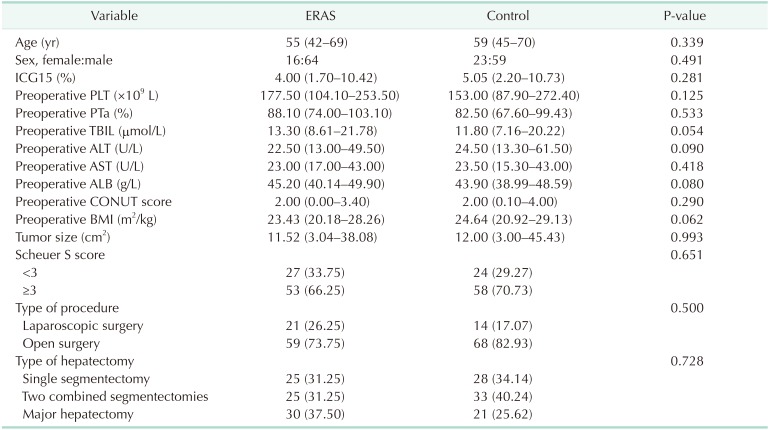


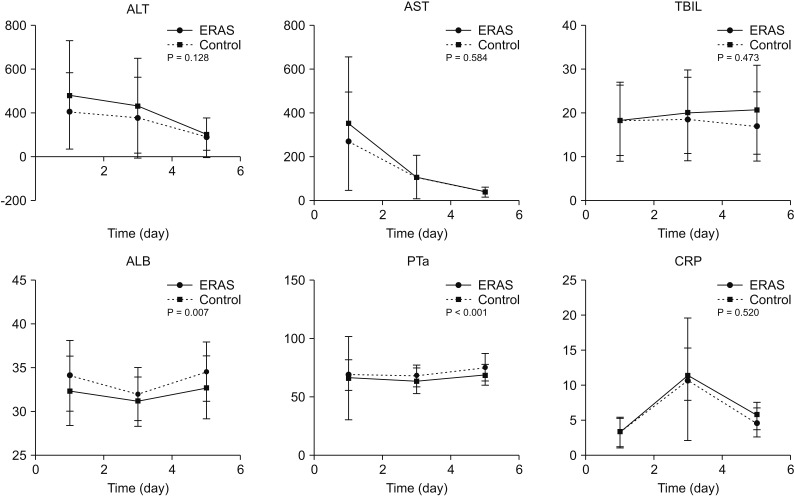




 PDF
PDF Citation
Citation Print
Print



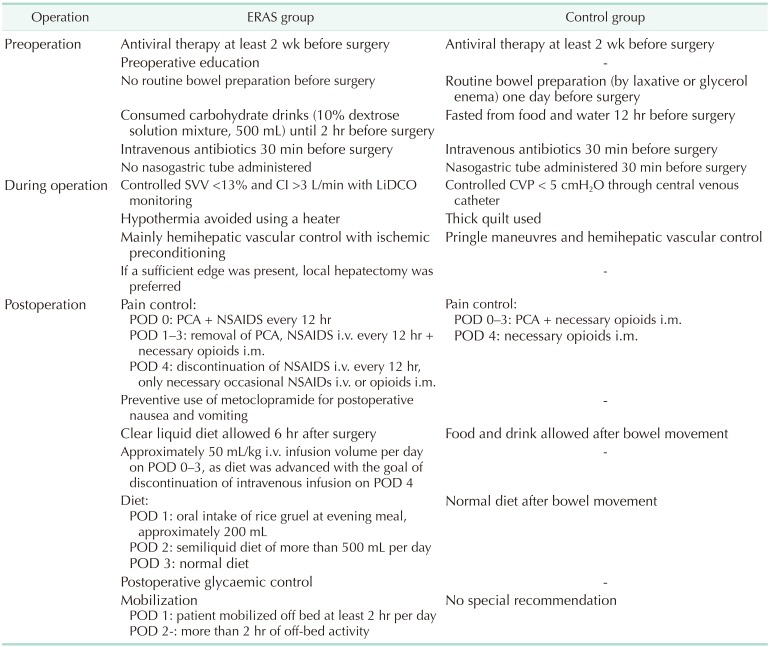
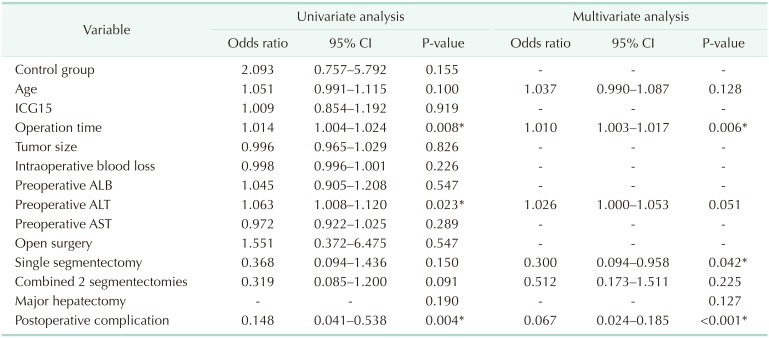
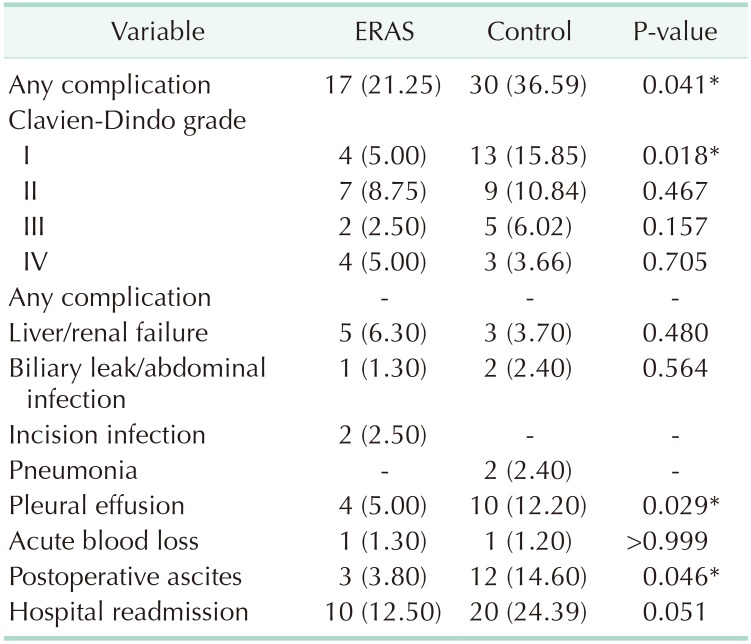
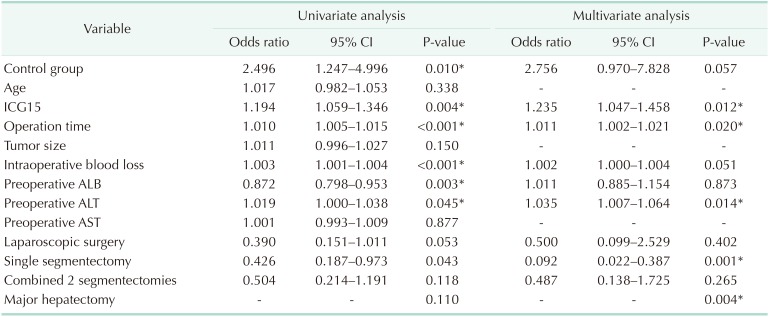

 XML Download
XML Download